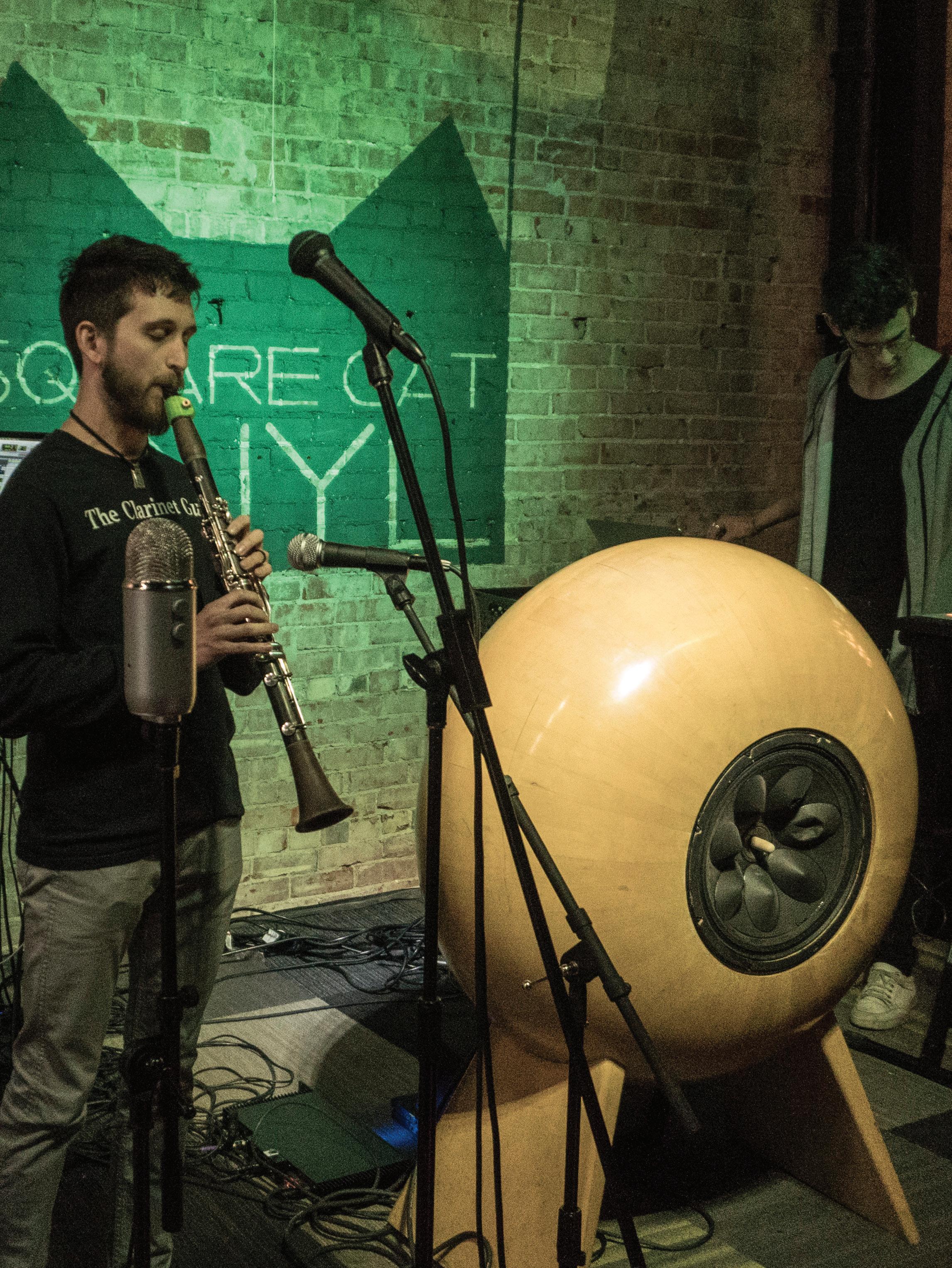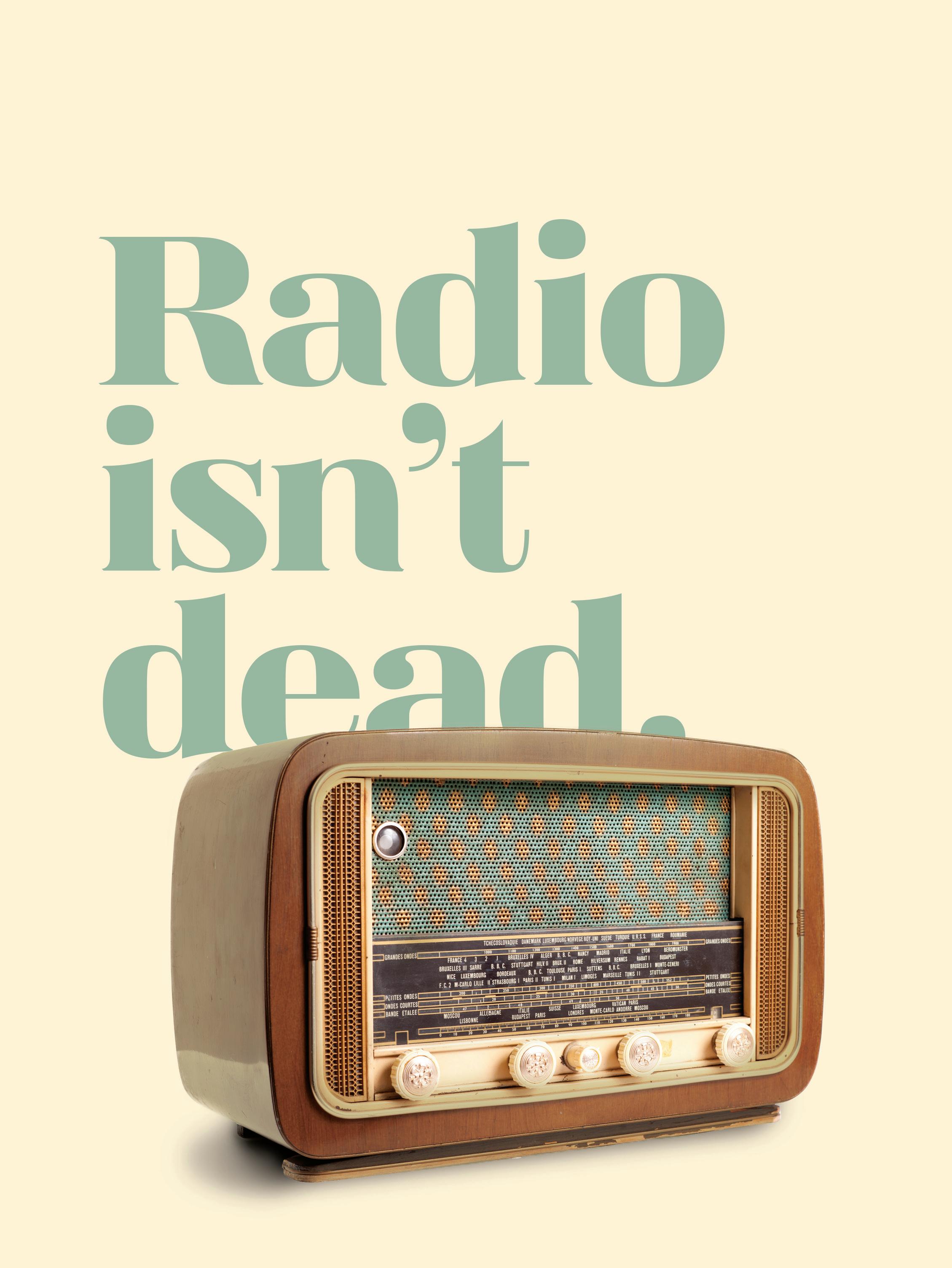
5 minute read
Vintage Voice
VINTAGE SPEAKERS FIND NEW LIFE WITH IUPUI MUSICIANS
by Crystal Hammon
Advertisement
Imagine the educational value of a pair of mid-century RCA speakers to music technology students in 2018. How relevant is 60-year-old technology to the way sound is projected today? Last summer, Classical Music Indy (CMI) invited Doug Bielmeier, Ed.D., an assistant professor of music technology at Indiana University-Purdue University Indianapolis (IUPUI), to answer that question. After examining the vintage speakers, Bielmeier decided their unique acoustic qualities offered a chance to blend old and new in an innovative learning experience for students. Originally made as RCA prototypes, the speakers were donated to CMI by Christine Plews and John Halter. Their cousin Jerome Halter owned the speakers before his death in 2009. The retired RCA sound engineer’s Indianapolis home was a paradise of sound gear and recordings. As Halter’s only heirs, they were pressed to find a good home for all of it—including the speakers. “They are so unique, and we really wanted to get them in the hands of someone who would appreciate them for what they are,” says Plews. “I think our cousin would be absolutely thrilled to know that they are being used to teach young people and advance the profession he cared about so deeply.” The smooth, bagel-shaped speakers became the basis of an independent study course Bielmeier designed for four IUPUI music technology students. Together, they restored and later debuted one of the speakers at a live community concert of original electronic music. The May 7 concert at Square Cat Vinyl in Fountain Square included CMI’s Assistant Director of Community Engagement Eric Salazar, who is also a classical clarinetist. “Restoring, repairing and creating new music to be performed on the vintage RCA speakers helped them make connections to our rich musical history while forging a path to the music of tomorrow,” Bielmeier says. “It became a way to relate what they do on computers with the music-production practices of the analog era.” IUPUI’s music technology students are musicians who learn how to record, compose, manipulate and perform all kinds of music. In today’s media-driven world, a computer isn’t just a computer— it’s also a musical instrument. To get into the program, many students audition using a laptop the way other musicians use a clarinet or a piano. Their mastery of software is akin to that of any virtuoso instrumentalist.
Making electronic music is often compared to what a disc jockey does, but Christian Rangel, a student enrolled in the course, says the comparison misses the mark. “I don’t DJ,” he says. “I perform everything live. I trigger all my own audio. I play my own chords and melodies.”
At the May concert, Rangel performed Grasp, an original composition that blends electronic music with manipulated sound clips drawn from open-source NASA archives. “The speakers are like a vintage voice talking to the crowd,” he says. “They’re a work of art in themselves, and it was so cool to play my music with something of such a unique caliber.” Rangel says the project inspired him and his classmates to keep pushing boundaries, giving audiences new ways to hear music. ■
Students enrolled in the Speakerless Independent Study Course were: Christian Rangel, Alex Hauptmann, Kathryn Holland and Keher Neote.
by Crystal Hammon

THE DIGITAL AGE HAS ITS OWN MANTRA FOR CAREER SUCCESS: CHANGE OR DIE.
Most college students internalize these words as a rule for survival, but the 2018 graduates of the radio program at University of Indianapolis are playing by a slightly different set of rules than their peers. By the time their diplomas arrived in May, half of them had jobs in the field—many as on-air talent.
They’re the future of radio, and they’ll succeed by delivering the same special sauce that has kept radio vibrant for the past 100 years. “Radio has always been an interactive medium—much more so than all the others,” says Scott Uecker, a veteran broadcaster and faculty member at the University of Indianapolis electronic media program. “We are the intimate media we have always been. Radio is live and it’s local. If we do it well, we connect with listeners like no one else can.”
No one denies the onslaught of competition coming from new media. But radio is still an industry darling in terms of advertising revenues, thanks to the size and scope of its listening audience. No other medium enjoys the daily relationship Americans have with AM/FM radio.
With 270 million listeners each week, radio has a bigger audience than television, smartphones, computers or tablets, according to the 2018 Audio Today Report by The Nielsen Company. Ninety-three percent of adults 18 and over are tuning in to radio. What’s more: its robust audience draws people of every age, gender and ethnicity.
NOTHING BEATS LOCAL RADIO TALENT
Uecker says the fuel for radio’s enduring popularity is the personal connection between each listener and the on-air personalities that bring us music. For that reason, the future of radio may depend on the industry’s ability to cultivate new on-air personalities who can entertain, inform and relate to listeners.
That’s especially true for classical music, which has only a fraction of the total listening audience. “Yes, the music is incredibly important because that’s how people decide what stations to preset in their cars, but what we put between the music must be valuable to listeners because there are so many similar and readily-available substitutes for radio,” says Uecker, who also serves as general manager at WICR on the University of Indianapolis campus.
Uecker believes radio alternatives will never be able to outperform local radio talent doing what they do best. “Every station in the market can play the exact same songs if they want to,” he says. “At WICR, if anyone wants to come on the air [in the local market] and go against us in the classical format, we’ve got Michael Toulouse. We’re going to win. People are listening to hear what he has to say about the music.”





